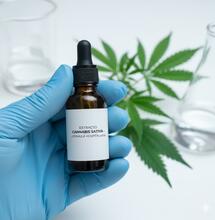Before Harvest

Watering is important when plants are flowering. Continue regular irrigation as needed. Make sure to check the soil moisture daily to avoid overwatering. Always irrigate in the morning so that the majority of water is used during the day. Soggy roots at night will slow growth substantially.
Watering is important when plants are flowering. Continue regular irrigation as needed. Make sure to check the soil moisture daily to avoid overwatering. Always irrigate in the morning so that the majority of water is used during the day. Soggy roots at night will slow growth substantially.
Watering is important when plants are flowering. Continue regular irrigation as needed. Make sure to check the soil moisture daily to avoid overwatering. Always irrigate in the morning so that the majority of water is used during the day. Soggy roots at night will slow growth substantially.
Do not water for one or two days before harvest. The soil should be fairly dry, but not dry enough that plants wilt. This will speed drying time by a day or more and not affect the quality of cannabinoids and terpenes.
The fragrance of flowering medicinal cannabis is often pungent before, during, and after harvest. If air in and around drying and manicuring room is stagnant, odors linger and accumulate. To help control fragrance keep drying and manicuring rooms well-vented. If possible, allow plenty of fresh circulating air to pass through the drying room to remove fragrances quickly. Keep temperatures below 21° C to minimize aroma.
Loss of Fragrance
“Terpenes, or terpenoids, are the compounds in cannabis that give the plant its unique fragrance. THC and the other cannabinoids have no odor, so marijuana’s compelling fragrance depends on which terpenes predominate. It’s the combination of terpenoids and THC that endows each strain with a specific psychoactive flavor.” Martin Lee
The aroma, taste and ultimately effects of smoked cannabis depend upon the mix of terpenes and cannabinoids. Often cannabinoids and terpenes volatize and are destroyed during flowering harvest and storage as a result of high temperatures and maltreatment. The absence of these compounds diminishes bouquet and taste. It can also affect the overall effect of the cannabis.
Cannabis plants lose their fragrance for a combination of reasons, all of which involve destruction of terpenes or the creation of a poor environment for terpenes to develop. During flowering plants that are subjected to heavy weather including wind, rain and hot sunlight or artificial light, are often less fragrant. Outdoor plants also accumulate surface dust, bacteria and other bad stuff. When allowed to remain on the plant these pollutants can smell and possibly speed cannabinoid and terpene degradation. Often indoor environments are more polluted than the great outdoors. Such pollutants could also play a role in diminishing fragrance.
Terpenes and cannabinoids evaporate into the air in a wide range of temperatures, 119-435º C. As temperatures climb, more and more terpenes evaporate into the air. Terpenes can also be destroyed with high temperatures, humid weather, wind, rain, fondling and rough handling. The terpinoids may also not have a chance to develop properly on plants that grow under stressful conditions including climate, care and disease and pest attacks.
Plenty of air circulation and ventilation is necessary to promote manicured flower buds to dry. The buds in these net trays are turned once or twice a day by hand so they dry evenly.
Drying cannabis can lose its fragrance when it dries too hot and fast. Fast drying does not allow enough time for chlorophyll and other pollutants to dissipate, and they remain in the foliage. The lingering smell and taste of these undesirable elements impart detectable odors and tastes when consumed.
When poorly dried and it stays too wet, as if in a compost pile, cannabis starts anaerobic decomposition. This process causes cannabis to smell like wet hay and extreme cases have an ammonia-like odor.
Plants could harbor powdery mildew or another disease within their tissue. This disease is impossible to detect without laboratory analysis. Such diseases weaken plants and could also play a part in the deterioration of fragrance.
Hanging complete branches is a great way to dry flower buds of medical cannabis. These branches have just been harvested. The large leaves have been removed and the buds trimmed lightly.
Bacteria, dead microscopic pests and their feces, dust and many other pollutants remain on the surface of cannabis foliage at harvest. These elements could also affect fragrance. Washing harvested cannabis with a dilute bath of H2O2 will remove and disinfect plants. Clean plants smell “fresh.” The fragrance of cannabis is all that remains.
Genetically, some plants appear to be predisposed to less aroma and loosing fragrance over time. In combination with climatic conditions, genetics could play a role in minimizing cannabis fragrance.
Negative ion generators act within a small area and have virtually no impact on the fragrance of growing cannabis. Ozone generators introduce the free radicle ozone (O3) into an enclosed area. The O3 converts to O2 within a few minutes. Carbon filters remove fragrances before air is expelled outdoors.
Ozone Generators should be located outside of the room.
The fragrance of cannabis can also be controlled by sealing the drying and manicuring rooms. Set up a fan and carbon filter in the room to remove fragrances before venting the air out of the room.
Leach soil heavily 5-7 days before harvest. Leaching soil will wash out any fertilizer salts that have accumulated in the soil. This allows the plant to use the balance of the nutrients in its system before harvest.
Avoid the taste of chemical and organic fertilizers in harvested buds by leaching with plain water or a clearing solution to remove any residuals and chemicals that have built up in soil or plant foliage. Five to six days before harvesting, leach the growing medium with clean tap water or reverse osmosis water. Use a clearing solution such as Final Flush® to remove any built-up nutrients in soil.
Some indoor gardeners fertilize with a liquid salt-based fertilizer up until 2-3 days before harvest and use a clearing solution to remove fertilizer residues. They say the practice helps plants retain weight in flower buds. But it does not make buds grow any faster and fertilizer residues are still present in plant tissue. The tradeoff is fertilizer adding weight at the expense of medicinal quality.
This big healthy crop of Blue Dream is ready for harvest.
Apply the leaching solution as per directions. Always let at least ten percent, preferably more, drain out the bottom of containers. If using a re-circulating hydroponic system, change the water after the first four to six days of application. Continue to top off the reservoir with “clean” fresh water.
How to tell when fertilizer “could” affect taste
1. Leaf tips and margins are burned
2. Leaves are brittle at harvest
3. Flower buds smell like chemicals
4. Flower buds crackle when burning
5. Buds taste like fertilizer
Do not water for one or two days before harvest. The soil should be fairly dry, but not dry enough that plants wilt. This will speed drying time by a day or more and not affect the quality of cannabinoids.
A green light or a UVB lamp makes pest trails and diseases impossible to miss!
Inspect plants at night with a green light or a UVB light. Powdery mildew and insect feces and trails are visible; they actually jump out at you as if you were reading an eye chart in the optometrist’s chair. Carefully remove all signs of powdery mildew before it enters plant tissue. Spray fungus with an organic fungistat before removing it to ensure it does not contaminate the rest of the crop. This method works only when there is very little mildew.
Some gardeners keep plants in 24-48 hours of darkness before harvesting. They say this practice causes buds to become more resinous.



